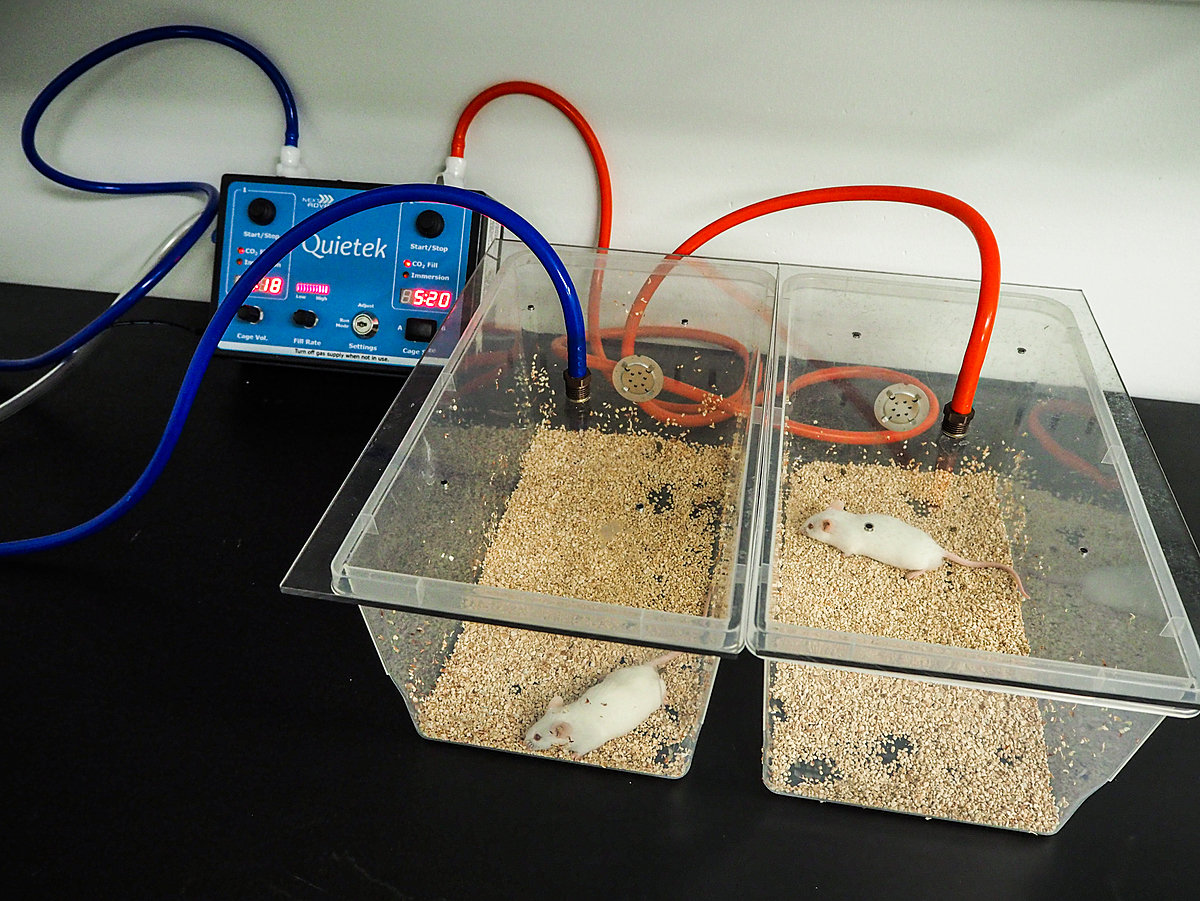Millions of animals are subjected to painful laboratory experiments in Canada every year, often without any pain relief. Animal experiments are done not only for biomedical research, but also for chemical safety tests, basic scientific studies, and education and training.
Shockingly, the federal government doesn’t regulate or oversee the use of animals in research and testing, leaving animals almost completely unprotected against mistreatment. Instead, Canada relies on the Canadian Council on Animal Care (CCAC)—a non-profit organization with no legal authority, which is dominated by animal experimenters – to develop guidelines for the use of animals in scientific research.
The CCAC generally inspects labs only once every three to five years in pre-announced visits—giving labs plenty of time to cover up poor conditions. Participation isn’t legally required for labs, and many private labs that don’t rely on government funding do not participate.
The CCAC is not a law enforcement agency, and it has few enforcement tools to use against a lab for failing to meet its guidelines. Even in cases of egregious animal abuse, all that the CCAC can do is recommend that government science funding bodies refuse to give further public funding to a lab.
Canada urgently needs national regulation and oversight of laboratories, with regular, unannounced inspections, and inspection reports that are available for the public to access. National coordination is also needed to ensure no duplicate experiments are conducted on animals, and that animal-free research methods are required anytime they exist.
The government doesn’t collect statistics about animal research in Canada, but in 2022, the CCAC reported that over 3.5 million animals were used in labs that it oversaw. This isn’t the full picture, because private labs have no legal obligation to report. Mice, birds, and fishes are the most used animals, but no species are safe—tens of thousands of animals like dogs, cats, and primates are also used each year.

Progress Against Animal Testing for Cosmetics & Toxicity
In 2023, Canada passed two groundbreaking laws to protect animals used for research. The first is legislation aimed at phasing out the use of animals in toxicity tests. Toxicity tests are used to test chemicals to see whether they are harmful to the environment or human health, and many of these tests fall into the cruellest and most painful category of animal research. The Liberal Party of Canada committed to ending toxicity testing on animals by 2035 during the 2021 federal election.
An exciting bill was also passed to ban the testing of cosmetics on animals, as well as the sale of animal-tested cosmetics. The new law is already in effect.
Animal Testing is Flawed & Outdated
Testing on animals for medical research can be an emotional and hotly debated topic. But the truth is, animal models used for testing pharmaceutical products and medical treatments are often unreliable, and fail to translate into humans. The reason for this is simple—humans and non-human animals often have very different physiologies, and what works in an animal such as a mouse or a guinea pig often does not work in a human. Animal models of diseases simply cannot replicate the complexity of human bodies, which is why 95 percent of drugs that pass through animal models fail at the clinical human trial stage.
The good news is that science is evolving, making humane, animal-free tests more readily available each year. The We Animals Media short-film, Gold Standard Turned to Rust, provides a good overview of this issue.
In 2017, the Canadian Centre for Alternatives to Animal Methods opened at the University of Windsor, aiming to develop animal-free, human biology-based alternatives to replace the use of animals in biomedical research, education, and chemical safety testing.
Alternatives to animal testing include:
- In vitro: Laboratory studies using cells or tissues outside a living organism, such as in petri dishes or test tubes.
- Computer modelling and simulation: Digital simulations predicting drug behavior and biological processes in the human body.
- Organ-on-a-chip: Microfluidic devices with living cells simulating human organ function.
- Human-derived models: Use of human cells and tissues, including 3D bioprinted tissue models.
- Microdosing: Administering very small drug doses to humans.
- Epidemiological studies: Observational human studies to understand health impacts of various factors.
- Virtual dissection and synthetic models: Using virtual reality and artificial models for anatomy and surgical education.
We must do better for the millions of animals used in Canadian laboratories each year. Safer modern technologies exist, and these are the future of medical research. Canada can avoid lagging behind the rest of the world, scientifically and ethically, by supporting the development, validation, and use of non-animal methods and moving towards ending all animal experimentation as soon as possible.

